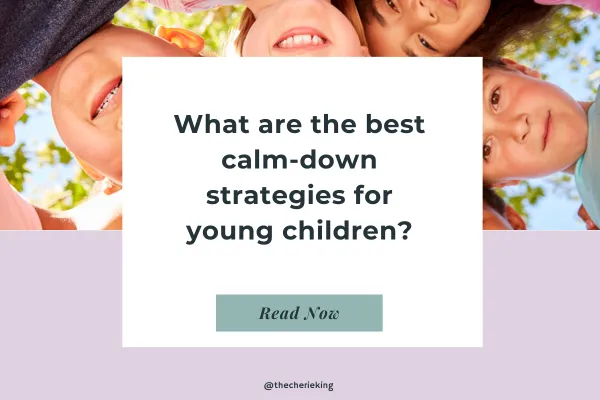
What are the best calm‑down strategies for young children?
What are the best calm‑down strategies for young children?
In every early years classroom, big emotions are part of daily life. From frustration over sharing to tears at tidy-up time, young children experience feelings with their whole bodies. These moments aren’t signs of misbehaviour — they’re signs of overwhelm.
When children’s nervous systems become overloaded, they need the steady presence of a calm adult and simple, nurturing tools to help them reset. The goal isn’t to stop the emotion, but to guide children back to safety, connection, and self-control.
Here are seven calm-down strategies every educator can use to support emotional regulation, practical, gentle, and backed by what we know about how children’s brains develop.

1. Start with Co-Regulation - Your Calm Is Contagious
Before any strategy works, a child must feel safe. That begins with you.
When you regulate your own breathing and body language, you send powerful cues of safety.
How to do it:
Lower your voice instead of raising it.
Take one slow breath for every quick one a child takes.
Get down to their eye level and say softly, “You’re safe. I’m here.”
Your nervous system helps guide theirs back to calm. Remember: children borrow your calm before they find their own.
2. Create a Calm-Down Space (or “Time-In” Corner)
A calm-down corner is a safe space, not a punishment. It invites children to pause, reset, and regulate in their own time.
How to do it:
Choose a quiet corner with soft lighting.
Add cushions, fidget tools, emotion cards, breathing visuals, or your Calm Classroom Toolkit posters.
Teach how to use it before emotions run high — role-play together so children know it’s a safe choice, not a “time-out.”
Tip: Allow children to name their space (“the peace place,” “quiet corner”) to build ownership.
3. Teach Breathing with Playful Prompts
Deep breathing is one of the most effective calm-down tools, but it must be child-friendly.
How to do it:
Use imagery: “Smell the flower, blow the candle.”
Or “Bubble Breathing”: pretend to blow bubbles slowly without letting them pop.
Use “Breathing Buddies”: children place a soft toy on their tummy and watch it rise and fall.
These simple visuals make mindfulness tangible for young minds.
4. Add Movement to Release Energy
Sometimes children need to move before they can settle. Physical movement helps discharge stress hormones and reset the body.
How to do it:
Try a “shake it out” dance to music, then a deep breath.
Encourage slow animal walks (bear, turtle, or sloth!).
Use yoga cards or stretching poses to help the body relax.
Movement reminds children that emotions are energy — and energy can move safely through the body.
5. Use Sensory Tools to Ground the Body
Sensory calm-down tools help children reconnect with the present moment.
How to do it:
Offer items with texture (stress balls, playdough, smooth stones).
Keep a small basket of “quiet toys” in your calm space.
For visual grounding, use glitter jars or slow-moving sand timers.
Encourage children to describe what they feel, see, or hear — this activates the thinking brain and lowers stress responses.
6. Name and Validate Feelings
Children can’t manage what they can’t name. Labelling feelings teaches emotional literacy and shows acceptance.
How to do it:
Use emotion cards or mirrors to identify expressions.
Say, “You look frustrated that it’s not your turn. That feeling makes sense.”
Avoid dismissing (“You’re fine!”); instead, acknowledge and guide (“Let’s take a breath together”).
Validation builds trust and teaches that all feelings are okay — it’s what we do with them that matters.
7. End with Connection, Not Correction
Once calm returns, gently revisit what happened. This reflection teaches problem-solving without shame.
How to do it:
Ask, “What can we try next time?” or “How can we make it right?”
Reinforce belonging: “Even when things are hard, you are still safe here.”
Celebrate progress: “You took a deep breath before speaking — that was amazing self-control!”
Repair strengthens relationships and helps children feel secure enough to keep learning from challenges.
Final Thoughts
Calm-down strategies aren’t about controlling children — they’re about teaching regulation. When we model calm, create safe spaces, and use sensory and breathing tools, we build skills that last a lifetime.
Every time you guide a child through big emotions with empathy, you’re wiring their brain for resilience, self-awareness, and trust.
Want practical tools to make this even easier?
Download your free Calm Classroom Toolkit a ready-to-use resource packed with visual supports, rituals, and regulation strategies to help you create an emotionally safe classroom where every child can thrive.
Connect with me:
Facebook: https://www.facebook.com/thecherieking
Instagram: https://www.instagram.com/thecherieking/